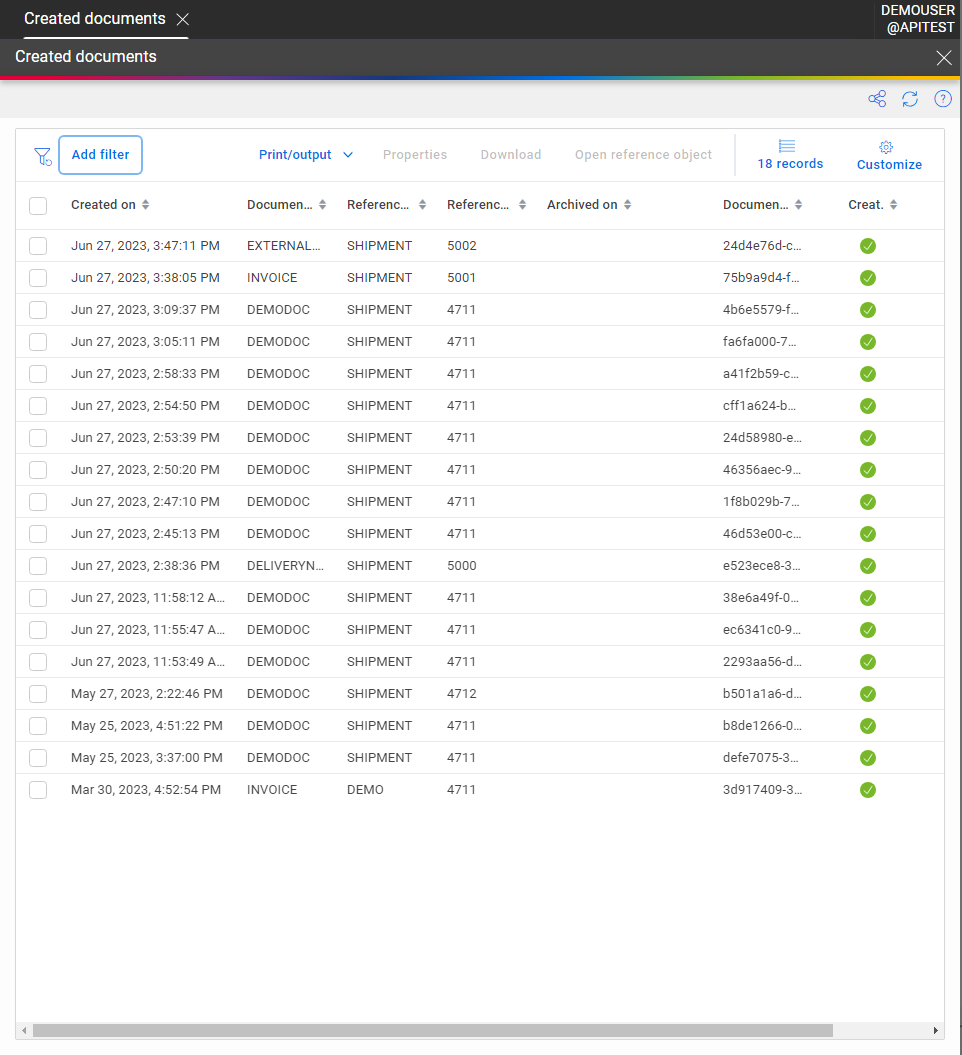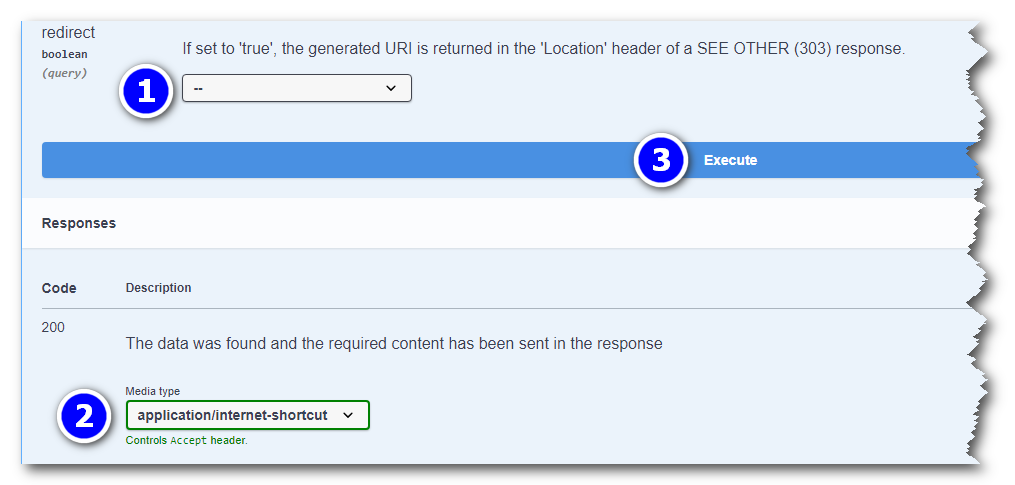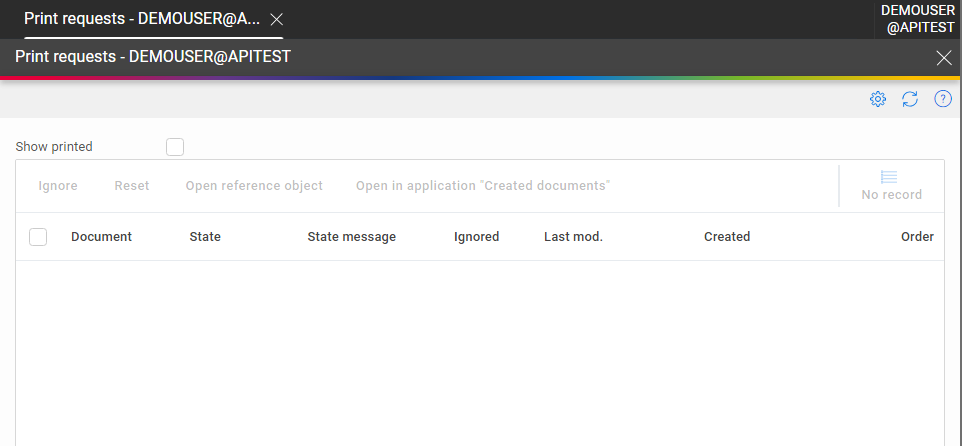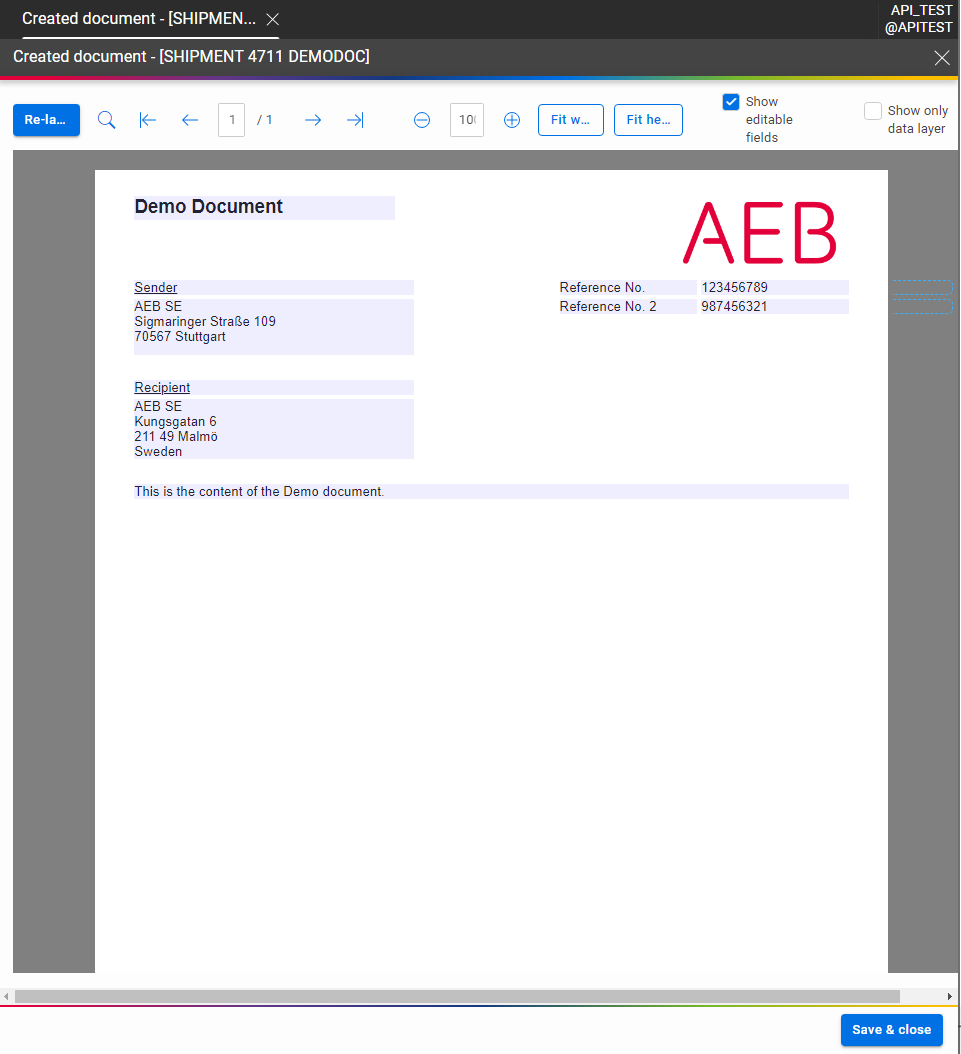User Interface
There are several situations where manual interaction via user interface is needed. The access to some basic applications can be obtained in form of a pre-authenticated URL from specialized "ui" API.
Any application is opened in a statefull session, do not forget to close it when you are finished with your work.
Document Overview
For manual interactive document maintenance, use UI/Application Facade to get a short-live, pre-authenticated URL link to the Document Search Application:

This application allows you to
- filter existing documents by various criteria
- show or download contents of individual documents
- display properties of individual documents (when it was created etc.)
- delete documents
Try it out
Redirected Request
Open the Document Search Application directly. The authentication is already included in the URL and a 303 SEE OTHER redirection result is generated. The request is based on ui/openStagedDocumentSearch with redirect=true.
This technique is designed to be used:
- for presentation purposes in a browser (the browser resolves the redirection, like in the link above)
- when the 303 response is resolved explicitly in your code (the target URL must be extracted for the
Locationheader)
Regular Response
Fill in the required user, language and filter parameters in ui/openStagedDocumentSearch. Ensure that redirect is not set. Then execute the request.
You get a 200 response like this (the format depends on the request Accept header):
{
"sessionid": "AFCall-Invoke12345",
"httpUrl": "https://rz3.aeb.de/demo1docs/servlet/...",
"urlCloseToken": "goodbypage"
}<?xml version="1.0" encoding="UTF-8" standalone="yes"?>
<ApplicationFacade>
<httpUrl>https://rz3.aeb.de/demo1docs/servlet/...</httpUrl>
<sessionid>AFCall-Invoke12345</sessionid>
<urlCloseToken>goodbypage</urlCloseToken>
</ApplicationFacade>To open the application, copy the value of the returned httpUrl and paste it into your browser (or into the Win+R Run command prompter). Alternatively, the URL can be extracted from the link header.
The returned URL link is valid for a short period only (30 seconds).
This technique is designed to be used within code that prefers to handle 200 responses with access to either its payload data (JSON or XML) or headers.
Internet Shortcut Download
Fill in the required user, language and filter parameters in Swagger UI. Ensure that redirect is not set and select application/internet-shortcut for the response media type. Then execute the request.

You get a response like this:

You then use the Download file link to save the response into a shortcut-file on your computer. Then open the downloaded file and the application opens in your browser. You can also copy the application URL from the link header.
The returned URL link is valid for a short period only (30 seconds). The downloaded file must be opened quickly.
Remark: The shortcut-file is a Windows format and the content looks like this:
[InternetShortcut]
URL=https://rz3.aeb.de/demo1docs/demo1docs_node1/servlet/...This technique is designed to be easily used with Swagger UI.
Print Request Overview
For manual interactive print request maintenance, use UI/Application Facade to get a short-live, pre-authenticated URL link to the Print Queue Application:

This application allows you to
- see your pending print requests (optionally, printed requests can be displayed, too)
- restart, ignore or remove a failed print request
- remove pending requests
The print queue is by default bound to the authenticated user. Alternatively, a workstationId can be specified.
Try it out
See the examples for Document Overview above - the same techniques apply here, too.
Document Editor
To manually preview a previously generated document or edit its data in a WYSIWYG editor, use UI/Application Facade to get a short-live, pre-authenticated URL link to the application.
You need a valid documentId of the document.
Try it out
Using Swagger UI
Fill in the required user, language and documentId in Swagger UI. The default action is PREVIEW; set editorAction to EDIT if you want to enter the editor directly. Ensure that redirect is not set and select application/internet-shortcut for the response media type. Then execute the request, follow the Download file link and open the downloaded file.
You get something like this in your browser and you can edit and save the data there:

The document is exclusively locked as long as this application is open. It protects other users and background processes to interfere with your changes. It is crucial that you close the editor when you are finished (either save or cancel). This editor is not intended to preview the documents (use the document overview instead and open the document there).
Using command line
Updated 5 months ago